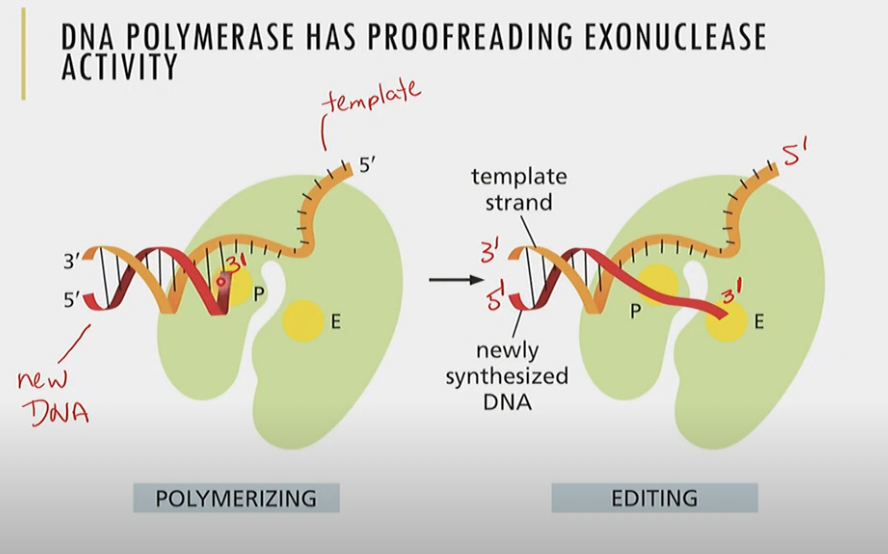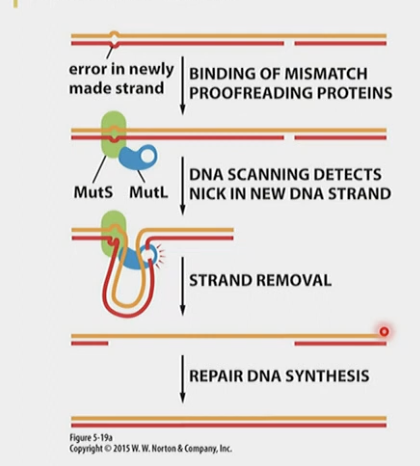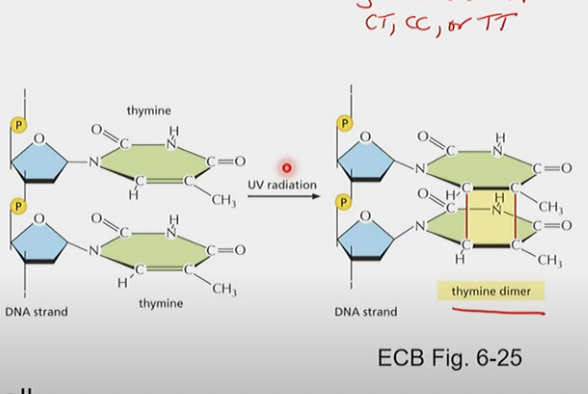Week 4 - Issues in DNA Replication
0.0(0)
0.0(0)
Card Sorting
1/16
Earn XP
Description and Tags
Study Analytics
Name | Mastery | Learn | Test | Matching | Spaced |
|---|
No study sessions yet.
17 Terms
1
New cards
Describe the unwinding problem
The torsional strain and supercoiling that develops when helicase unwinds DNA.
* Is a problem in both circular chromosomes and large linear eukaryotic chromosomes
* Solved by DNA topoisomerase
* Is a problem in both circular chromosomes and large linear eukaryotic chromosomes
* Solved by DNA topoisomerase
2
New cards
How does DNA topoisomerase I solve the unwinding problem?
It creates a transient single-strand break (breaks a phosphodiester bond)
3
New cards
Special problem for linear eukaryotic chromosomes
Primase can’t put a primer right on the edge of the lagging strand, so without intervention, genetic code will be lost with each replication.
4
New cards
Telomerase function
Solves replication problem in Eukaryotes using telomeres
5
New cards
Telomeres
Repetitive G-rich sequences (since RNA template has lots of C’s) attached to 3’ end of parental strand template.
6
New cards
Telomeres and Cancer
* Telomeres are abundant in germ cells but not somatic cells
* Loss of telomeres limits the number of rounds of cell division
* most cancer cells produce high levels of **telomerase**
* Loss of telomeres limits the number of rounds of cell division
* most cancer cells produce high levels of **telomerase**
7
New cards
Two mechanisms that control DNA repair
* 3’ → 5’ exonuclease
* strand-directed mismatch repair
* strand-directed mismatch repair
8
New cards
exonuclease
3’ → 5’
removes misincorporated nucleotide by causing DNA pol. to pause and move one space 3’ → 5’ (like backspace) to remove incorrect nucleotide
removes misincorporated nucleotide by causing DNA pol. to pause and move one space 3’ → 5’ (like backspace) to remove incorrect nucleotide

9
New cards
Nucleases
* ribonucleases
* deoxyribonucleases
enzymes that attack nucleic acids
* deoxyribonucleases
enzymes that attack nucleic acids
10
New cards
Strand-directed mismatch repair
* When proofreading fails
* initiated by detection of distortion in the geometry of the double helix generated by mismatched base pairs.
* MutS detects it, MutL helps remove a large strand
* initiated by detection of distortion in the geometry of the double helix generated by mismatched base pairs.
* MutS detects it, MutL helps remove a large strand

11
New cards
DNA damage can be caused by
* oxidation
* radiation
* Can cause Pyrimidine dimer (CT, CC, or TT) where two bases bind to each other
* heat
* chemicals
* as well as other cell stressors
* radiation
* Can cause Pyrimidine dimer (CT, CC, or TT) where two bases bind to each other
* heat
* chemicals
* as well as other cell stressors

12
New cards
Spontaneous Damage
* Depurination
* You can lose a random purine
* Deamination
* randomly losing an amine group and having U instead of C
* You can lose a random purine
* Deamination
* randomly losing an amine group and having U instead of C
13
New cards
How mutations arise
After a **deamination** event, when the G is changed to an A the mutation becomes permanent and you can’t go back because U base pairs with an A!
After **depurination**, the A-T nucleotide pair will just be deleted4
After **depurination**, the A-T nucleotide pair will just be deleted4
14
New cards
Methods of DNA repair
Base excision and nucleotide excision
15
New cards
Base excision repair
* 1 nucleotide problem
Clips off glycosidic bond between base and sugar
AP endonuclease and phosphodiesterase remove sugar phosphate
Then DNA pol. and ligase successfully add new nucleotide to the gap
Clips off glycosidic bond between base and sugar
AP endonuclease and phosphodiesterase remove sugar phosphate
Then DNA pol. and ligase successfully add new nucleotide to the gap
16
New cards
Nucleotide excision repair
Excision nuclease chops off pyrimidine dimer
DNA helicase, DNA polymerase and DNA Ligase fix bigger gap
DNA helicase, DNA polymerase and DNA Ligase fix bigger gap
17
New cards
DNA Repair of double-stranded breaks
Nonhomologous end joining
* Break repaired with some loss of nucleotides at repair site, since end joining is just done by DNA Ligase
Homologous recombination
* Break repaired with no loss of nucleotides at repair site
* Using undamaged RNA as a template
* Break repaired with some loss of nucleotides at repair site, since end joining is just done by DNA Ligase
Homologous recombination
* Break repaired with no loss of nucleotides at repair site
* Using undamaged RNA as a template